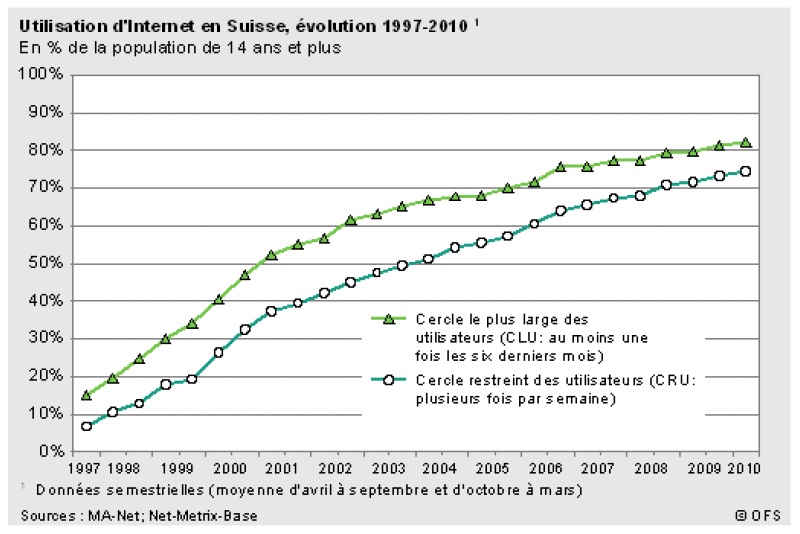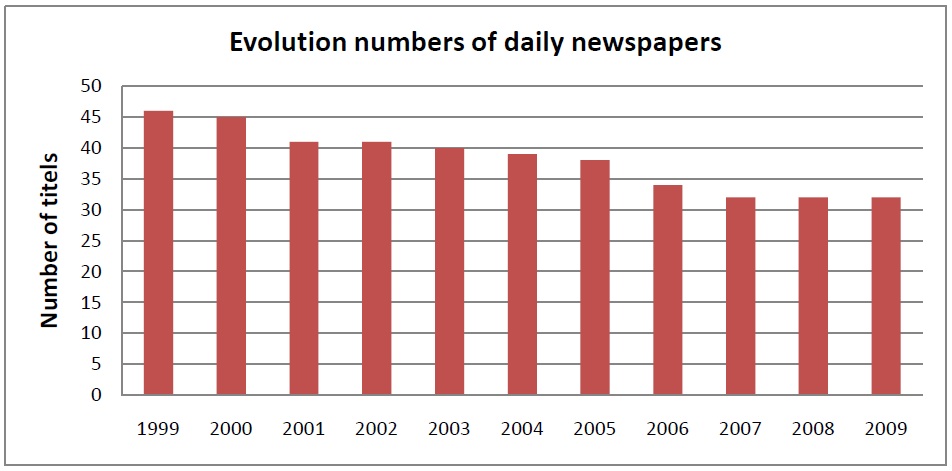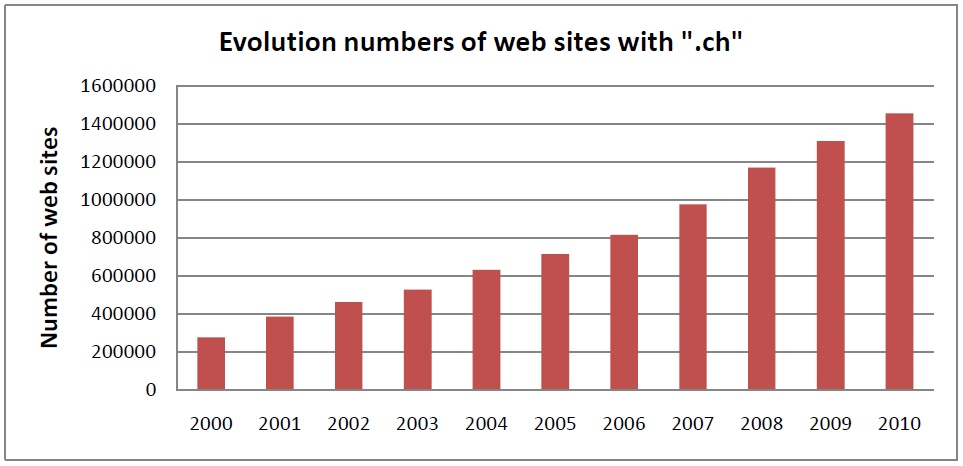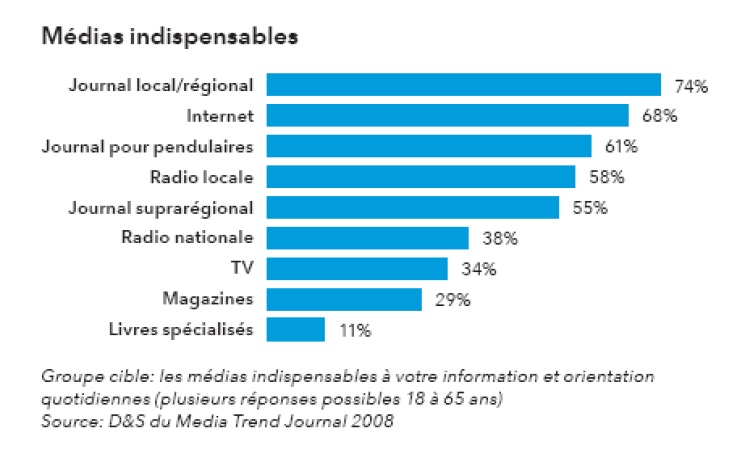As just seen, people now consume more media than before. There are many more possibilities in terms of different types of media available than before. The main reason for that is the emergence of the Internet in the world. The next graphic illustrates its growing presence in Switzerland.
Use of the Internet in Switzerland, evolution 1997-2010
% of the population, 14 years and up
(5)

This graphic is very clear, as it shows that more than 70% of the Swiss population uses Internet more than once a week. That number was less than 10% in 1997, when the web was at the beginning of its surfacing.
The arrival of the Internet allowed a lot of improvements in the media accessibility in general. For instance radio and television are now available through the Internet. When you have a computer with access to the web you can watch or listen to almost every radio station or TV channel in the world. You do not necessarily need your classical TV or radio set anymore. This is the first part of the changes brought by Internet: some media that were there before can now be used in the same way only online.
Another easy way to look at the changes brought by the Internet can be done by comparing the offer of newspapers and online offer in the last few years. Below it is the evolution of the total amount of daily newspapers in Switzerland (published at least four times a week):
(6)

And then if a quick look is taken at the number of websites with “.ch” the relation between the two is easily drawn:
(7)

Of course other factors come in play but these two first graphics help to illustrate the direct influence Internet has had on newspapers, in particular the dailies. The following table shows how the online readership quickly grows in Switzerland:
Evolution of the online readership of subscription newspapers in Switzerland
(8)

Clearly there is a huge raise in online readership; the number is particularly impressive from 2005 to 2009, as it was an increase of 300%.
A different facet that illustrates the changes due to Internet is that the Web has become a huge factor in the media landscape of Switzerland. Many people consider that it is an essential media to them. The graphic below shows that today it is almost as indispensable as local newspapers:
Essential media for information in Switzerland, people from 18 to 65
(9)

The influence has been huge in the jobs department as well. “More than a thousand journalists and employees in publishing houses lost their jobs.
Some newspapers have greatly reduced their network of foreign correspondents, and those journalists who remain are increasingly writing for several different publications or media.”(10) All these problems result from the financial difficulties caused in large part by the Internet.
A further characteristic of the changes is all the new possibilities that the Internet created. Podcasts, blogs, videos, forums, mobile Internet are a few of the new media that were created thanks to the web. It seems that almost every day there is a new way to consume and have access to information. This culture of the online attracts mainly young people and diverts them from the traditional media, like the press, the radio and the television(11).
To sum up, the facts are clear: all the new media that arrived on the market make for a very different landscape today. For Proulx Internet did not only change the media landscape: “the emergence and development of the Internet are situated in a social and historical context much larger than only the growth of communication machines.”(12) It is certain that Internet revolutionized many aspects of society. And so many changes were never seen before in such a short amount of time. But these alterations are not positive for everybody. The newspapers were modified as well in the last fifteen years in a drastic way. They were hurt a lot by all the technology that was brought into the media business. The next chapters will detail more specifically how this happened.
5 http://www.bfs.admin.ch/bfs/portal/fr/index/themen/16/03/key/ind16.indicator.30106.160204.html?open=1#1
6 Schweizer Presse, p.13
7 Schweizer Presse, p.12
8 World Press Trends 2010
9 D&S du Media Trend Journal 2008
10 World Press Trends, p. 1020
11 Förschungsbereich Öffentlichkeit und Gesellschaft, p.5
12 Proulx, p. 51
Page suivante : 2.3. Popularity of the different types of information media in Switzerland
